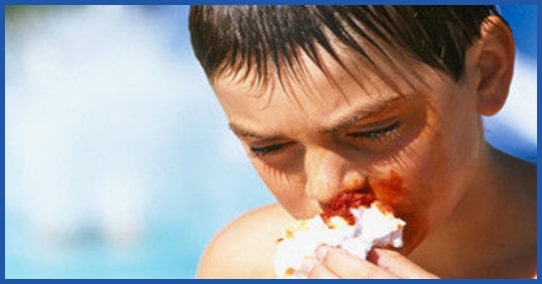
Nosebleeds are quite common among children. It occurs when the blood vessels present inside the lining of the nose bursts. There are several reasons that can cause bleeding from nose including allergic reactions, infection, injury, nose picking or if a child accidentally pushes a foreign object in the nose.
Clinically the problem is termed as epistaxis. Although it is not a very serious problem, if it occurs frequently or the bleeding is for a prolonged period, you must consult your caregiver.
Fragile Blood Vessels
The firm tissues, present in between the nostrils divide the nose into two sides or halves. These blood vessels are small and fragile and are prone to bursting very easily leading to nosebleed.
As they grow, children outgrow out of this condition. In few cases, prolonged or heavy bleeding may necessitate medical intervention. Otherwise, first aid treatments are effective in controlling the bleeding from nose.

Symptoms of Nosebleeds
The symptoms of nosebleeds include:
- Bleeding from both or either of the nostrils
- Sensation of liquid flowing back through the throat
- Intense urge to swallow frequently
Causes of Nosebleeds
The nose bleeding causes include:
- Sinuses, adenoids, or some other infection of the nose lining
- Fragile blood vessels that start bleeding during exercise due to lack of air or in dry, warm air
- Allergy causing coughing or hay fever
- Nose picking
- Falls or bumps
- Pushing up of object up the nostril
- Occasional clotting or bleeding problem
Managing Nosebleeds with First-aids
Common nosebleeds can be easily managed at home. Some of the first aid tips are as follows:
- Calm down and reassure the child because crying increases the flow of the blood
- Ask the person to sit up with his head dropped slightly in forward direction
- Apply pressure with thumb or a finger on the soft part in between the bridge of the nostrils for around 10 minutes.
- During the time, the nostrils are pinched, ask, the suffering person/child to continue breathing through the mouth.
- If the child is wearing tight clothes, loosen the button at the neck.
- Place a cold pack or cold cloth on the forehead of the child or the person with nosebleed and one around his neck (sides of the neck).
- After 10 minutes, release the pressure on the nostrils and check whether the bleeding from the nose has stopped.
- If the bleeding has not stopped you must seek medical aid.
Make sure that the child does not pick his nose for at least 24 hours after the bleeding has stopped and also ensure that he does not put anything in the nose.
"We welcome your comments on this Post"

Add new comment